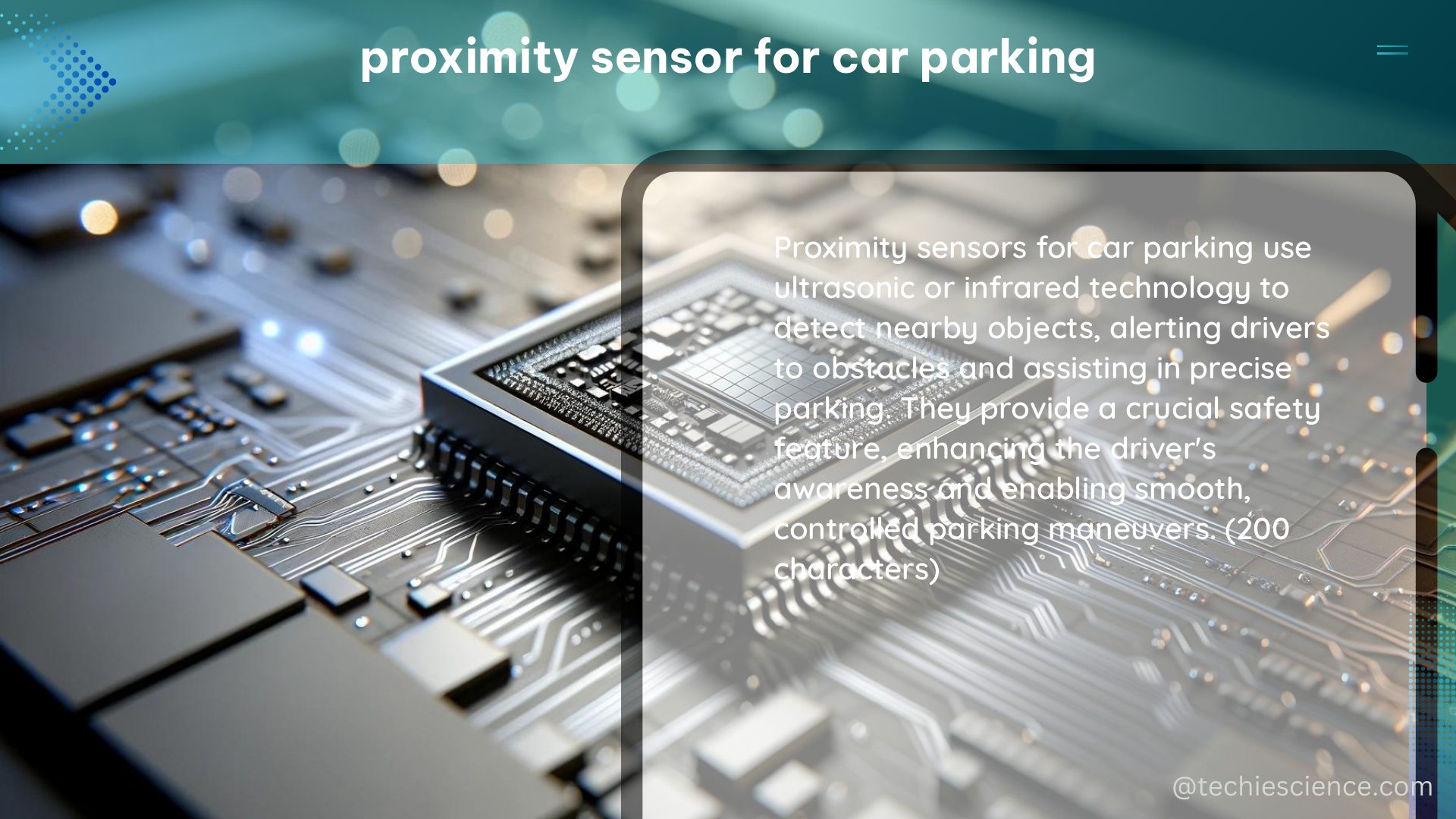Proximity sensors for car parking are essential devices that detect the presence of objects in the vicinity of a vehicle, providing a warning signal as the car gets closer to an obstacle. These sensors play a crucial role in assisted parking systems, helping drivers avoid collisions and park more efficiently.
Understanding the Chinese Parking Sensor
The Chinese parking sensor mentioned in the search results has a unique data waveform consisting of 24 data bits. This includes two large sync/start pulses and 21 pulses of data that change when the sensors are moved. The pulse train encodes the distance, with the bits possibly sent in reverse order. The sensor outputs only one number for all four sensors, whichever one is closer, making it challenging to track individual sensor readings.
Ultrasonic Parking Sensors

Ultrasonic parking sensors, like the one presented in an Instructables project, work by emitting sound waves and measuring the time it takes for the echo to return. The program for this sensor uses the Arduino platform and involves defining pins, setting up input/output, and calculating the distance based on the echo time. The sensor beeps more frequently as the car gets closer to an object, with different delay times for various distance ranges.
Technical Specifications of Proximity Sensors
Proximity sensors for car parking can have the following technical specifications:
- Detection Range:
- The distance within which the sensor can detect objects, typically ranging from a few centimeters to several meters.
-
For example, the Bosch Ultrasonic Parking Sensor has a detection range of 30 cm to 180 cm.
-
Field of View:
- The angle at which the sensor can detect objects, which can vary from narrow to wide.
-
Narrow field of view sensors (e.g., 30-degree) are suitable for tight parking spaces, while wide field of view sensors (e.g., 120-degree) are better for open parking areas.
-
Response Time:
- The time it takes for the sensor to detect an object and provide a warning signal.
-
Typical response times for ultrasonic parking sensors range from 50 milliseconds to 200 milliseconds.
-
Accuracy:
- The precision of the sensor in measuring the distance to an object.
-
High-end ultrasonic parking sensors can achieve an accuracy of ±2 cm within their detection range.
-
Environmental Factors:
- The sensor’s ability to function in various weather conditions and temperatures.
-
Sensors with IP67 or IP68 ratings are designed to withstand harsh environmental conditions, including water submersion and dust ingress.
-
Power Consumption:
- The amount of power the sensor requires to operate.
- Proximity sensors for car parking typically have low power consumption, ranging from 12 mA to 50 mA at 12 V DC.
Data Analytics for Smart Parking Applications
For a more in-depth understanding of data analytics for smart parking applications, you can refer to the following resources:
- Data Analytics for Smart Parking Applications
- A Survey of Intelligent Car Parking System
- Data Analytics for Smart Parking Applications (PDF)
These references provide valuable insights into the role of data analytics in smart parking systems, including the use of wireless sensor networks, low-cost wireless sensors, and human-machine interfaces for intelligent car parking.
Conclusion
Proximity sensors for car parking are essential components of assisted parking systems, providing drivers with crucial information to avoid collisions and park more efficiently. By understanding the technical specifications and data analytics involved in these sensors, you can make informed decisions when selecting and implementing proximity sensors for your car parking needs.
Reference:
1. Data Analytics for Smart Parking Applications
2. A Survey of Intelligent Car Parking System
3. Data Analytics for Smart Parking Applications (PDF)

The lambdageeks.com Core SME Team is a group of experienced subject matter experts from diverse scientific and technical fields including Physics, Chemistry, Technology,Electronics & Electrical Engineering, Automotive, Mechanical Engineering. Our team collaborates to create high-quality, well-researched articles on a wide range of science and technology topics for the lambdageeks.com website.
All Our Senior SME are having more than 7 Years of experience in the respective fields . They are either Working Industry Professionals or assocaited With different Universities. Refer Our Authors Page to get to know About our Core SMEs.